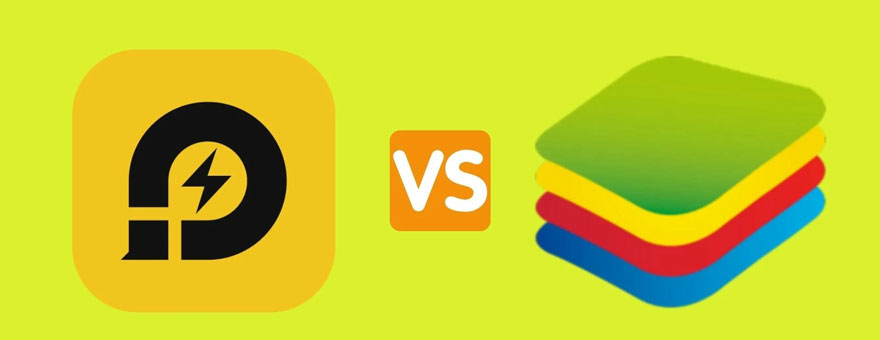
Emulator Showdown: LDPlayer vs. BlueStacks

Let’s be real—mobile gaming has come a long way. What started as a simple pastime on tiny phone screens has exploded into a full-blown industry, with competitive esports, AAA mobile titles, and games that honestly look better than some PC releases from a few years ago. And yet, for all its glory, mobile gaming still has one major downside—you're stuck with a tiny screen, limited battery life, and touchscreen controls that can never match the precision of a keyboard and mouse.
Want to know what emulators do? Well, what seemed impossible a few years ago. They let you run mobile games on your PC, giving you better performance, custom controls, and a much smoother experience overall. The giants of this industry, the emulators, are Bluestacks and LD Player. There’s differences between both and both offer a different experience. Which one to with when it comes to your gaming time? Let’s discuss.
LD Player: The lightweight option
So, LDPlayer. This emulator brands itself as a fast, lightweight alternative for Android gaming. It’s supposed to be easy on system resources, making it a solid pick for people running older PCs or laptops that aren't exactly built for high-performance gaming. And to be fair, it does a decent job with casual games. If you’re playing something like Clash of Clans or Subway Surfers, you’ll probably get by just fine.
But—and it’s a big but—if you try throwing anything remotely demanding at LDPlayer, things start to fall apart fast. Open-world games? FPS games? Anything that needs consistent high FPS? Good luck with that. You’ll be dealing with lag spikes, frame drops, and the kind of stuttering that makes you question all your life choices. Another thing? Stability. This emulator crashes. A lot. One minute, you’re deep into a battle royale match, the next, the whole thing just vanishes. Like it was never even open. And the frustration? It’s real.
And we can’t not mention security concerns. LDPlayer doesn’t have the same level of transparency or reputation that some of the bigger names in the game have. There have been whispers about data privacy issues, and honestly, when it comes to software that runs on your system, you really don’t want any question marks floating around.
Bluestacks: The king that holds the crown
Now let’s talk about BlueStacks—the OG of Android emulation. This thing has been around for ages, constantly getting upgrades and optimizations, and you can tell. Right off the bat, performance is smooth as butter. Doesn’t matter if you’re running Genshin Impact, Call of Duty Mobile, or PUBG, this thing just works. High FPS? Check. No lag? Check. No weird crashes that make you scream into the void? Check.
Customization is another area where BlueStacks just gets it. You can tweak everything—key mapping, macros, multi-instance gaming, even GPU settings. Want to run two games at once? Easy. Need precise keyboard and mouse controls for an FPS? Done. This isn’t just an emulator—it’s practically a full-blown gaming platform.
And let’s talk stability. Unlike LDPlayer, where you always feel like something might go wrong, BlueStacks just feels solid. You can game for hours without worrying that it’s suddenly going to crash or eat up all your RAM. It’s polished, optimized, and frankly, leagues ahead.
Then there’s security. BlueStacks has been around for years, and it’s backed by an actual, legit team that values transparency. No shady background processes, no data privacy concerns—it’s just a well-built emulator that does what it’s supposed to do without any hidden nonsense.
So, who wins?
Let’s not drag this out. LDPlayer is okay for super casual gaming, but if you want the best experience—whether you’re playing competitively, grinding out ranked matches, or just don’t want to deal with constant bugs and crashes—BlueStacks is the way to go.










